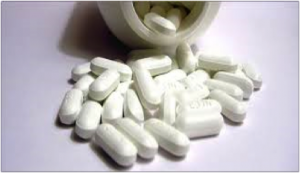PHARMACEUTICALS
Human & Veterinary Medical Products
We have Access to Reputable Wholesale Suppliers
- We supply Medical Pharmaceutical products from the best Medical Equipment to Complimentary Medicinal products.
- We also supply all kinds of Veterinarian Products.
OUR MEDICAL RANGE INCLUDES:
- Medical Supplies
- Pharmaceutical Supplies
- Human Pharmaceuticals
- Cold Chain Biologicals
- Surgicals and Disposables
- Veterinarian Products
- Large and Companion Animal Pharmaceuticals
- Equine and Poultry Pharmaceuticals
- Infeed Medication
- Veterinary Retail Products
- Instruments
- Pet Accessories
PHARMA DIVISION
Introduction to the African pharmaceuticals environment
According to the Economist Intelligence Unit, by 2016, pharmaceutical spending in Africa is expected to reach US$30 billion. This value is driven by a 10.6% compound annual growth rate (CAGR) through 2016, second only to Asia Pacific (12.5%) and in line with Latin America (10.5%) during this period. Spurred by a convergence of demographic changes, increased wealth and healthcare investment, and rising demand for drugs to treat chronic diseases, this market potentially represents a US$45 billion opportunity by 2020.
The pharmaceutical growth is a reflection of economic strength accompanied by increasing healthcare spending. Sub-Saharan Africa (SSA), excluding South Africa, is notable in this regard as many of its economies are growing faster than anywhere else in the world and this trend is expected to continue.
The appeal of Africa lies not in its size – the continent accounts for just 3% of the global economy – but in the dynamics that drive sustainable growth at a time when the major established pharmaceutical markets face a more uncertain future. FDI is fuelling macroeconomic growth and vastly improving access to new technology. Alongside the increasing economic wealth is a notable rise in healthcare spending, which has grown at a CAGR of 9.6% since 2000 (across 49 African countries). Fuelled by government, non-government organizations (NGOs) and private sector investment, this has largely focused on strengthening health system infrastructure, capacity building, treatment provision and specialized services.
Real gross domestic product (GDP) is expected to grow at 5% per annum through 2017 in SSA and this trend of rising healthcare spending is expected to continue.The changing economic profile of Africa is also linked to an increased demand for chronic care drugs, reflecting a marked shift in the burden of illness towards non communicable diseases (NCDs) and the continued impact of human immunodeficiency virus and acquired immune deficiency syndrome (HIV/AIDS) on the continent.
The NCD proportional contribution to the healthcare burden is forecast to rise by 21% through 2030.While continuing to struggle with infectious and parasitic illnesses, Africa is expected to experience the largest increase in death rates from cardiovascular (CV) disease, cancer, respiratory disease and diabetes over the next ten years, resulting in greater demand for healthcare services and appropriate medicines.
The combination of economic strength and an expanding middle class is already driving a demand for medicines across Africa. For example, in Algeria, Morocco and Tunisia, a rise in wealth has triggered demand for chronic medicine consumption. In Algeria, the chronic medicine to essential medicine ratio increased by 72% from 2002 to 2011, accompanied by a total Gross National Income (GNI) increase of 70%.8,9,10 A similar trend is likely to emerge in other countries, such as Kenya and Botswana, where NCDs have been declared a national priority at the ministerial level.
Map showing growth of pharmaceutical sales growth and trading blocks in Africa.


